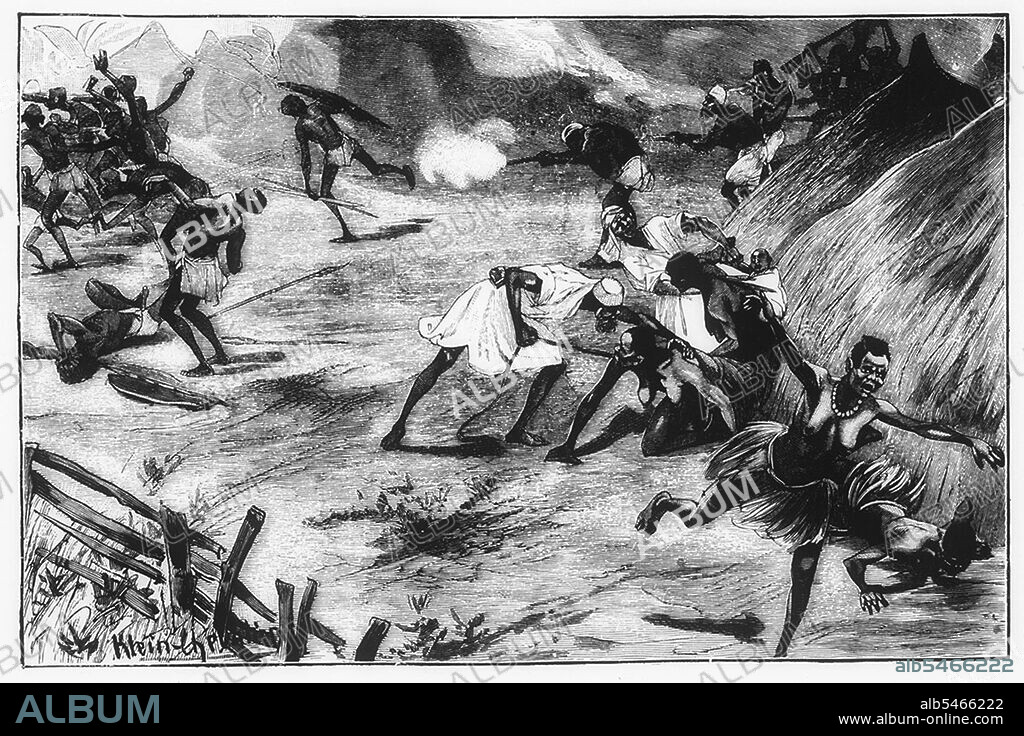alb5466222
Central Africa: Arab slave traders attacking an African village (Hermann von Wissman,1880)

|
Ajouter à une autre Lightbox |
|
Ajouter à une autre Lightbox |



Avez-vous déjà un compte? S'identifier
Vous n'avez pas de compte ? S'inscrire
Acheter cette image.
Sélectionnez l'usage:

Titre:
Central Africa: Arab slave traders attacking an African village (Hermann von Wissman,1880)
Légende:
Voir la traduction automatique
Black slaves were imported into the Muslim world from Africa by a number of routes northward across the Sahara desert, and by sea into Arabia and the Persian Gulf. Estimates of the number involved vary greatly but it seems that there may easily have been 10 million, perhaps even twice that number. Two-thirds of African slaves were female. The males were considered to be troublesome. An uprising of slaves from West Africa, the Zanj, who had been imported into the Tigris-Euphrates delta to reclaim salt marshland through their backbreaking labour, lasted from 869 until 883. The mortality rate was very high because of the harsh conditions, but the trade was so lucrative that merchants were not deterred by the numbers who died. Harrowing eye witness accounts tell of the vast scale and miserable conditions of the slave trade in Africa. In the 1570s many thousands of black Africans were seen for sale in Cairo on market days. In 1796 a caravan was seen by a British traveller leaving Darfur with 5,000 slaves. Black eunuchs became favoured for the royal harems. Even after Britain outlawed the slave trade in 1807, a further 2 million Africans were enslaved by Muslim traders. (Barnabas Fund, 2007).
Crédit:
Album / Pictures From History/Universal Images Group
Autorisations:
Modèle: Non - Propriété: Non
Questions sur les droits?
Questions sur les droits?
Taille de l'image:
5100 x 3403 px | 49.7 MB
Taille d'impression:
43.2 x 28.8 cm | 17.0 x 11.3 in (300 dpi)
Mots clés:
AFRICAIN • AFRICAINE • AFRIQUE • ART (CATÉGORIE) • ART • COMMERCE D'ESCLAVES • ESCLAVAGE • HISOIRE • HISTOIRE • SOUDAN • TRAFIC D'HOMMES
 Pinterest
Pinterest Twitter
Twitter Facebook
Facebook Copier le lien
Copier le lien Email
Email
